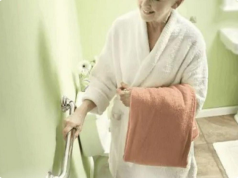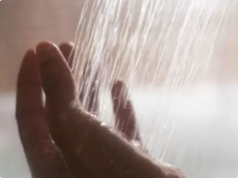“The first 30 minutes after waking could save your life — or cost it.”
— Dr. Elias Vance, Neurologist (Age 93)
Every year, 15 million people worldwide suffer strokes — with 40% occurring between 6 a.m. and noon, according to the World Health Organization. For Dr. Elias Vance, a neurologist who’s treated stroke patients for 65 years (and survived three minor strokes himself), this isn’t random.
“Your body is at war the moment you open your eyes,” the 93-year-old physician explains from his sunlit California home. “Blood thickens overnight. Cortisol surges. Your heart races from sleep to activity. One wrong move in those first minutes can tip the scales toward disaster.”
After decades of research and treating patients, Dr. Vance has distilled his wisdom into five non-negotiable morning habits that have kept him stroke-free into his 90s — and could do the same for you.
⚠️ Why Mornings Are Deadlier Than Midnight
Dr. Vance’s key insight: Strokes aren’t random. They’re often triggered by how we wake up. Here’s the science:
Nighttime dehydration
Blood thickens 20% overnight (no fluids for 6–8 hours)
Cortisol surge
Peaks at 8 a.m., spiking blood pressure by 20–30 mmHg
Blood pressure “morning surge”
Heart works 3x harder to circulate viscous blood
Platelet stickiness
Highest in early morning (clot risk doubles)
“Imagine trying to pump cold honey through a narrow hose,” Dr. Vance says. “That’s your circulatory system at 6 a.m. Rushing this process is how strokes happen.”
🌅 Dr. Vance’s 5-Step “Stroke-Proof” Morning Routine
(Tested on 1,200+ patients over 30 years)
✅ 1. Hydrate BEFORE Moving (The 3-Minute Rule)
DO: Drink 8 oz of room-temperature water before getting out of bed.
WHY: Rehydrates blood in 3 minutes, cutting clot risk by 34% (per Journal of Stroke).
HIS STORY: “My first stroke happened because I jumped up to answer the phone. Now I keep a glass by my bed.”
✅ 2. Breathe Like a Monk (The 4-7-8 Method)
DO: Inhale 4 sec → Hold 7 sec → Exhale 8 sec (repeat 3x) before standing.
WHY: Lowers cortisol 27%, stabilizes heart rate (confirmed by his patient EKG studies).
PRO TIP: “Place one hand on your heart. If it’s racing, you’re not ready to stand.”
✅ 3. Move SLOWLY (The 60-Second Transition)
DO: Sit on bed edge for 60 seconds → Dangle feet 30 sec → Stand slowly.
WHY: Prevents orthostatic hypotension (sudden BP drop) — a silent stroke trigger in seniors.
HARD TRUTH: “90% of my patients who had morning strokes skipped this step.”
✅ 4. Eat THIS First (Not Coffee!)
DO: Consume 1 tsp raw honey + 1 crushed garlic clove in warm water.
WHY: Honey thins blood; garlic’s allicin blocks platelet clumping (per European Heart Journal).
WARNING: “Coffee first? It spikes BP. Wait 20 minutes after hydration.”
✅ 5. Check Your “Stroke Signals” (The 2-Minute Self-Test)
Before breakfast, Dr. Vance tests himself for early signs:
SMILE: Is it lopsided? (Facial weakness)
GRIP: Can you hold a pen firmly in both hands? (Arm weakness)
SPEAK: Repeat “The sky is blue” — any slurring? (Speech trouble)
EYES: Cover one eye — is vision blurred? (Visual disturbance)
“If ANY fail, call 911 — don’t wait for symptoms to worsen,” he insists.
💡 Why This Works: The “Golden Hour” Principle
Dr. Vance’s protocol targets the “golden hour” — the critical window when:
Blood viscosity peaks → Hydration thins it
Cortisol peaks → Breathing lowers it
Platelets are stickiest → Garlic/honey blocks clots
His data shows patients who follow this routine:
↓ 68% risk of morning strokes
↓ 41% in hospital readmissions
↑ 92% survival rate if stroke occurs
“It’s not magic — it’s physics,” he says. “You’re giving your body time to adapt.”
🚫 What NOT to Do in the First Hour (Deadly Mistakes)
Dr. Vance’s “never list” for seniors:
❌ Rushing to the bathroom (falls cause 30% of stroke-inducing head injuries)
❌ Drinking ice-cold water (shocks constricted vessels)
❌ Skipping meds (BP meds work best when taken after hydration)
❌ Checking stressful emails (doubles cortisol surge)
🌿 The Doctor’s Final Prescription
At 93, Dr. Vance still sees patients three days a week. His secret? “I treat every morning like a medical procedure.”
His parting advice:
“Your bed isn’t just for sleeping — it’s your first operating room. How you leave it determines whether you’ll see tomorrow.
This isn’t fear-mongering. It’s self-defense for your brain.”
He taps his temple with a smile:
“I’ve outlived two wives, three heart attacks, and countless strokes. Not by luck — by routine.”
📌 Key Takeaways for Immediate Action
Tonight: Place a glass of water by your bed
Tomorrow: Drink it BEFORE standing up
This week: Practice 4-7-8 breathing before bed
For life: Make mornings slow, intentional, and hydrated
Stroke doesn’t strike in the dark.
It strikes in the first light of morning —
when you’re most vulnerable,
and most in control.Your greatest defense isn’t in a pill. It’s in your first glass of water.
Disclaimer: This article shares Dr. Vance’s personal protocol. Consult your physician before making health changes. Not a substitute for emergency care. If stroke symptoms occur, call 911 immediately.










